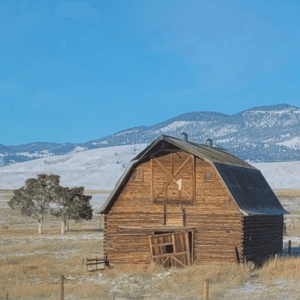Pictured: Travis Field and nephew Scott Ockler
A New Season of Planning
2025 has been a landmark year for farmers, ranchers, and landowners. The planning landscape has shifted, with Congress and the President locking in significant tax changes this summer. Some provisions give absolute stability, while others add new wrinkles that require careful timing.
Here are the key moves worth considering before you put away the combine this Fall.
Section 179 and Bonus Depreciation: Permanence Restored
Farmers can breathe easier on equipment write-offs. Section 179 expensing remains permanent and inflation-adjusted, letting you deduct millions of dollars’ worth of qualifying purchases in the year placed in service.
Thanks to the new law, 100% bonus depreciation is back and permanent for most new and used property placed in service after January 19, 2025. That means tractors, hay equipment, pivots, and grain bins can all be written off immediately, no more watching a phase-down chart.
Together, these tools give you the flexibility to smooth income in high-harvest years and reinvest in your operation without dragging out deductions.
Land Sales and 1031 Exchanges: Brackets and Stability
The capital gains brackets remain unchanged if you consider selling ranch land, timber ground, or a homestead parcel. That predictability makes long-range planning easier. The tried-and-true 1031 like-kind exchange is untouched by the new law. Farmers can still defer tax by swapping one property for another, keeping more capital working. Given the pace of rural land sales in Montana, this remains a critical estate and retirement tool.
Gifting and the Lifetime Exemption: Higher Ground
The biggest estate planning headline is that the 2025 law made the high estate and gift exemption permanent, avoiding the scheduled cutback. Starting January 1, 2026, the exemption will climb to $15 million per person, indexed yearly.
That means high-net-worth landowners can transfer farm and ranch property without exposure to federal estate tax. Annual exclusion gifts ($18,000 per recipient for 2025) still provide an easy way to move smaller amounts tax-free, but bigger land or equipment transfers can now be made with more certainty.
“Trump Accounts”: A New Farm Family Tool
The new law also introduced “Trump Accounts” — tax-favored savings vehicles designed to build family wealth and encourage intergenerational transfer.
• Children born between 2025 and 2028 receive a $1,000 federal seed contribution.
• Families can contribute up to $5,000 after-tax each year.
• Growth inside the account is tax-deferred.
These accounts could be helpful to side buckets for farm families with kids or grandkids who may someday inherit the land. They aren’t a replacement for trusts or gifting, but add a fresh, flexible layer to planning.
Medicaid & Long-Term Care: Changing the Rules
The 2025 law also reshaped Medicaid financing and eligibility. Beginning in 2027, retroactive coverage windows will shorten, and new verification rules will apply. While these changes are meant to control federal costs, they also raise the stakes for rural families who may need nursing home or in-home care.
Trust planning, early transfers, and long-term care insurance are more important than ever for Montana farm families. Without proactive steps, the family ranch or homestead could still be exposed to long-term care costs.
Montana-Specific Planning Considerations
While federal law sets the stage, Montana rules add another layer that landowners can’t ignore:
• Special Use Valuation for Ag Land: Fontana allows qualifying farm and ranch land to be valued based on its agricultural use rather than its full fair market value. For estate tax purposes, this can significantly reduce estate tax exposure and help keep land in the family. Careful planning is needed to meet the “material participation” and family ownership tests.
• Inheritance & Property Transfer: Montana has no state estate or inheritance tax, but families still face probate if assets aren’t appropriately titled or placed in trusts. A revocable living trust or transfer-on-death deed for farmland can streamline transfers and avoid delays.
• Property Tax for Ag Land: Montana classifies agricultural property separately from residential or commercial, often leading to more favorable property tax treatment. However, misclassification (for example, if land is left idle or leased differently) can trigger a reassessment. An annual review of your classification helps avoid surprises.
• Water Rights: Water rights often carry as much value as the land in Montana. When gifting or selling farmland, it’s crucial to ensure those rights are properly documented and transferred — otherwise, heirs may inherit dirt without access to irrigation.
Bringing It All Together
With 100% bonus depreciation and Section 179 now permanent, the estate exemption climbing to $15 million in 2026, and new tools like Trump Accounts available, 2025 has opened a window of opportunity for farmers and landowners. These changes give families more stability to plan, invest, and transfer assets without being held hostage to constant sunsets and expirations. But planning isn’t just about taking advantage of the good news. The new Medicaid rules will soon tighten eligibility, and Montana’s unique property and water rights laws can trip up even the most careful estate plan if ignored. For most farm families, the question isn’t if planning should be done, but how soon.
That makes this fall a crucial season to act. Before the year closes, sit down with your CPA, attorney, and family members to walk through a checklist:
• Equipment & Depreciation: Should you purchase or upgrade before year-end to lock in immediate deductions?
• Land & Exchanges: Is it wise to sell or restructure land holdings while capital gains brackets remain favorable and 1031 exchanges remain untouched?
• Estate Transfers: How will you use today’s high exemption, Montana’s special use valuation, and tools like TOD deeds or trusts to ease the handoff to heirs?
• Family Wealth: Could Trump Accounts complement more traditional gifting strategies?
• Risk Protection: Are your water rights properly documented, and do you have a plan to shield the homestead from long-term care costs?
Don’t wait until the snow flies. Harvest season is also planning season. The rules have changed, the opportunities are here, and the best time to secure your family’s future is before the calendar turns.
👉 Fall is the season to harvest more than crops — it’s the time to harvest tax savings, preserve your land, and protect your legacy.


Kassidy Wagner
Three Weeks Left: Essential Year-End Tax Moves for Montana Farmers
This year-end guide gives Montana producers the clear, practical steps they need to protect their profits and enter 2026 on solid financial footing.


Bjorn Swanson
Farm Income Timing Strategies for 2025
Learn how strategic timing—through prepaids, deferrals, CCC loans, and practical year-end planning—helps Montana producers smooth income, reduce tax swings, and prepare for a stronger year ahead.


Kassidy Wagner
Section 179 and Bonus Depreciation — Full Deductions Ahead
Learn how restored 100% bonus depreciation and expanded Section 179 rules give Montana producers powerful, time-sensitive opportunities to expense major farm investments and shape their 2025 tax outlook.


